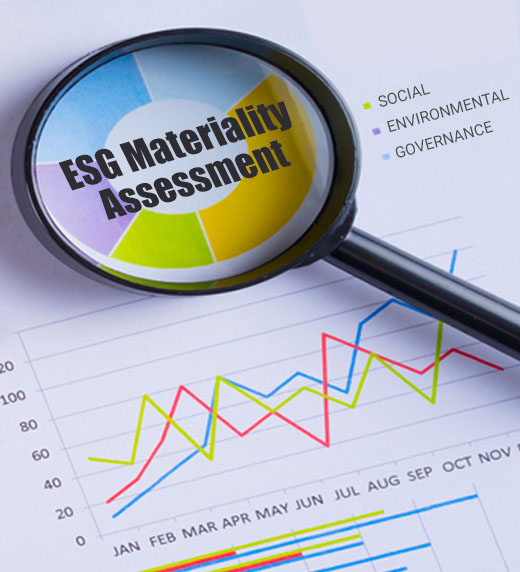Following the enactment of the Corporate Sustainability Reporting Directive (CSRD) and companies are required to make their 2024 reports under the European Sustainability Reporting Standards (ESRS) in 2025, many companies in the European Union are preparing for ESG reporting. But how do companies decide what to report on? How do they prioritize the most relevant and significant ESG issues for their business and their stakeholders? This is where materiality assessment comes in.
So what is Materiality Assessment and why is important?
Materiality assessment is the process of identifying, refining and assessing the numerous potential environmental, social, and governance issues that could affect a business and/or its stakeholders. In the context of the CSRD, a key consideration is the concept of “double materiality,” which emphasizes the importance of assessing not only the impact of these issues on the company itself but also their significance to external stakeholders. This means that companies have to report not only on how sustainability issues might create financial risks for the company (financial materiality) but also on the company’s own impacts on people and the environment (impact materiality). The output of a double materiality assessment is usually a materiality matrix or a materiality map that plots the material issues on two axes: the level of importance for the company (or financial materiality) and the level of importance for the stakeholders (or impact materiality) Therefore when conducting a materiality assessment, companies have to consider both perspectives and identify the most significant ESG issues from both an inside-out and an outside-in view. This can help companies to provide a more balanced and comprehensive picture of their ESG performance and contribution.
Materiality assessment is important for companies’ ESG reporting for several reasons:
• It helps companies to focus on the ESG issues that matter most for their business and their stakeholders. By identifying and prioritizing the most material issues, companies can allocate their resources and efforts more efficiently and effectively, and avoid reporting on irrelevant or insignificant issues.
• It helps companies to align their ESG reporting with the expectations and needs of their stakeholders. By engaging with their stakeholders during the materiality assessment process, companies can understand their perspectives and interests better, and respond to their feedback more promptly. This can enhance stakeholder trust and satisfaction, as well as create value for them more sustainably.
• It helps companies to comply with the ESG reporting standards and regulations. By conducting a materiality assessment, companies can ensure that they report on the ESG issues that are required or recommended by various frameworks and standards, such as GRI Standards and this can improve the quality, consistency, comparability, and credibility of their ESG reporting.
References
https://www.pwc.com/gx/en/services/audit-assurance/corporate-reporting/ESG-Materiality-Standards-Reporting.html.
https://ec.europa.eu/newsroom/fisma/items/754701/en
https://www.pwc.nl/en/topics/sustainability/esg/corporate-sustainability-reporting-directive/csrd-double-materiality-assessment.html.
https://www.esgthereport.com/what-is-materiality-in-esg/, SASB Standards.
https://longviewstrategies.com/esg-reporting-materiality-kks-advisors/, TCFD Recommendations.
https://esg.tech/glossary/materiality-assessments/, EU Taxonomy Regulation.
